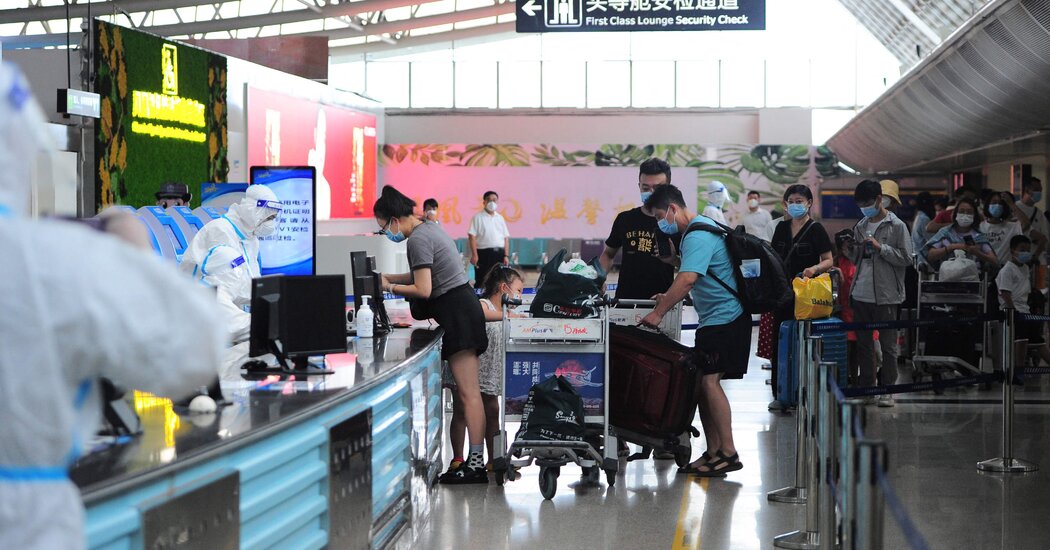A few days into a two-week tour through the island province of Hainan — known as the Hawaii of China — Nicole Chan received a message from local authorities that no traveler in the country wants to see in the pandemic.
On Aug. 3, a day after officials reported 11 cases of Covid-19 in Sanya, a city of more than one million in Hainan, Ms. Chan was identified by the authorities as at risk because she had been in the area that day. She was told to quarantine right away for a three-day monitoring period and to undergo two coronavirus tests.
After her isolation period was over and her tests negative, Ms. Chan, a freelance videographer, was told that she was not allowed to come to the airport because she had traveled to Sanya. It took 10 more days, 10 canceled flights and more than a dozen negative test results before she was permitted to leave the island and fly back to Shanghai, where she lives.
With China’s borders still shut, some people have turned to domestic travel to find relief from the aggressive testing, mass quarantines and widespread lockdowns that have become common in cities across the country. But China’s commitment to ensuring no Covid-19 cases in a population of 1.4 billion people has meant that even domestic tourists risk traveling to the wrong place at the wrong time and getting stuck there.
“It’s like playing Russian roulette with travel,” Ms. Chan said. “So much of it is out of your hands and out of your control.”
Over the last month, during the height of the summer travel season, China has shut down popular travel destinations in Hainan, Tibet and Xinjiang after outbreaks in those areas, stranding tens of thousands of tourists. In some cases, the tourists are on the hook to pay for their own hotel quarantines. In Sanya, the government ordered hotels to offer 50 percent discounts to stranded guests.
China’s hard-line approach of doing whatever it takes to keep Covid-19 under wraps — testing live fish in the port city of Xiamen, among countless other pandemic protocols — has taken a toll on the economy and weighed on the psyche of its citizens.
Travel offers little escape.
Chinese citizens are not allowed to go overseas for “nonessential” trips. Traveling within the country involves navigating a maze of ever-changing quarantine rules and testing requirements that vary by region — and that’s a best-case scenario.
In Sanya, the local government suspended local public transportation and halted sales of rail tickets as…
Click Here to Read the Full Original Article at NYT > Travel…
